
Kassel is a city on the Fulda River in northern Hesse, in central Germany. It is the administrative seat of the Regierungsbezirk Kassel and the district of the same name and had 201,048 inhabitants in December 2020. The former capital of the state of Hesse-Kassel has many palaces and parks, including the Bergpark Wilhelmshöhe, which is a UNESCO World Heritage Site. Kassel is also known for the documenta exhibitions of contemporary art. Kassel has a public university with 25,000 students (2018) and a multicultural population.
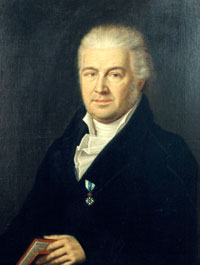
Samuel Thomas von Sömmerring was a German physician, anatomist, anthropologist, paleontologist and inventor. Sömmerring discovered the macula in the retina of the human eye. His investigations on the brain and the nervous system, on the sensory organs, on the embryo and its malformations, on the structure of the lungs, etc., made him one of the most important German anatomists.
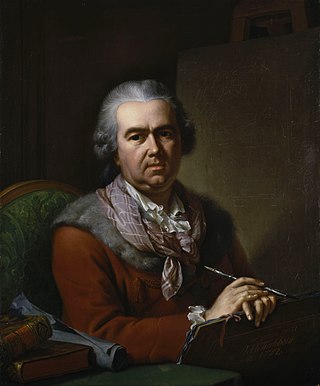
Johann Heinrich Tischbeinthe Elder, known as the Kasseler Tischbein, was one of the most respected European painters in the 18th century and an important member of the Tischbein family of German painters, which spanned three generations.

Charles of Hesse-Kassel, of the House of Hesse, was the Landgrave of Hesse-Kassel from 1670 to 1730.
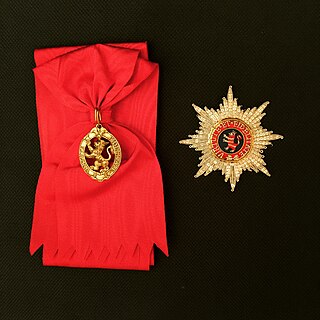
The House Order of the Golden Lion was an order of the German Landgraviate and Electorate of Hesse-Kassel and later, the Grand Duchy of Hesse and by Rhine. It was first instituted in 1770 by Landgrave Frederick II, in honour of and under the patronage of Saint Elizabeth of Hungary, an ancestor of the House of Hesse, and was intended to award auspicious merit.

William VIII ruled the German Landgraviate Hesse-Kassel from 1730 until his death, first as regent (1730–1751) and then as landgrave (1751–1760).

Bergpark Wilhelmshöhe is a landscape park in Kassel, Germany. The area of the park is 2.4 square kilometres, making it the largest European hillside park, and second largest park on a hill slope in the world. Construction of the Bergpark, or "mountain park", began in 1689 at the behest of the Landgraves of Hesse-Kassel and took about 150 years. The park is open to the public today. Since 2013, it has been a UNESCO World Heritage Site because of its monumental Baroque architecture and its unique fountains and water features.

The Ottoneum in Kassel, Germany was the first theater building built in Germany and is now a museum of natural history.

Princess Maria Anna Amalia of Courland was Landgravine of Hesse-Kassel through her marriage to Charles I, Landgrave of Hesse-Kassel. She was the child of Jacob Kettler, Duke of Courland and Semigallia and Margravine Louise Charlotte of Brandenburg. Her eldest son was King Frederick I of Sweden. One of her daughters was the most recent common ancestor of all currently reigning monarchs in Europe from 1939 to 1941 and 1943 to 2022.
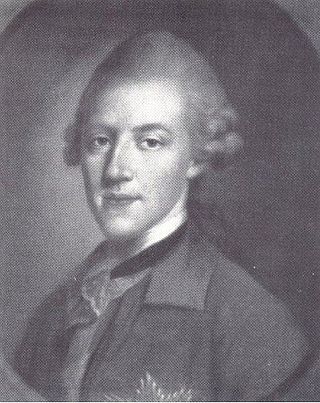
Frederick V Louis William Christian, Landgrave of Hesse-Homburg was from 1751 to his death landgrave of Hesse-Homburg.

Countess Juliane of Nassau-Siegen, German: Juliana Gräfin von Nassau-Siegen, official titles: Gräfin zu Nassau, Katzenelnbogen, Vianden und Diez, Frau zu Beilstein, was a countess from the House of Nassau-Siegen, a cadet branch of the Ottonian Line of the House of Nassau, and through marriage landgravine of Hesse-Kassel.

The Orangerie is an orangery in Kassel, Hesse, Germany. It was built under Landgrave Charles between 1703 and 1711. Since then, it forms the northern corner of the Karlsaue park. Today it is used as an astronomy and physical cabinet.

Louise Elisabeth of Courland was Landgravine of Hesse-Homburg by marriage to Frederick II, Landgrave of Hesse-Homburg.

Simon Louis du Ry was a classical architect.
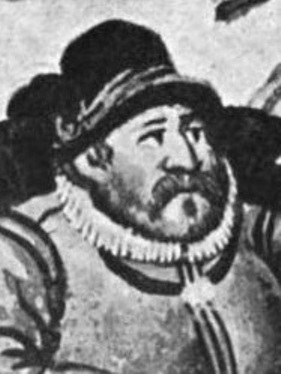
Count John I 'the Pious' of Waldeck-Landau, German: Johann I. 'der Fromme' Graf von Waldeck-Landau, was since 1539 Count of Waldeck-Landau. He was the founder of the younger cadet branch of Waldeck-Landau.

Philip August Frederick was Landgrave of Hesse-Homburg from 19 January 1839 until his death. He was a field marshal in the imperial Austrian army.
The Hessian War, in its wider sense sometimes also called the Hessian Wars (Hessenkriege), was a drawn out conflict that took place between 1567 and 1648, sometimes pursued through diplomatic means, sometimes by military force, between branches of the princely House of Hesse, particularly between the Landgraviate of Hesse-Cassel and the Landgraviate of Hesse-Darmstadt. It was triggered by a division of inheritance following the death of the last landgrave of all Hesse, Philip I in 1567.

Schloss Holzheim is a former hunting seat of the ruling family of Hesse-Kassel, located in the village of Holzheim in the German state of Hesse, approximately 80 kilometres (50 mi) south of Kassel. The hunting lodge was built between 1732 and 1735 under Frederick I, King of Sweden and also Landgrave of Hesse-Kassel, in baroque style on the medieval foundation walls of the former manor house of the local noble families Von Holzheim and Von Romrod. Frederick's father, Landgrave Charles I, Landgrave of Hesse-Kassel had often come here for hunting. Frederick's brother and governor, Prince William, liked to be here as well because of the rich game population of the forest areas around the princely estate.
Count Heinrich Julius von Kospoth was a Hessian major general who served in the American Revolutionary War. He was first colonel of the Musketeer Regiment Wutgenau and later as a major general, commanded the First Hessian Division; consisting of the regiments Knyphausen, Ditfurth, Prince Frederick, Bose, Borbeck, Bunau, Benning and Knobloch as well as the Grenadier Battalion Angenelli.

Johann Jakob Pfeiffer was a German evangelical theologian, as well as a professor, and later, dean, at the University of Marburg.


















